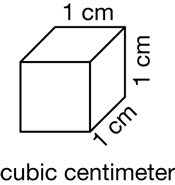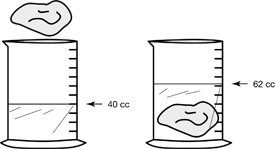|
|
Daily Practice and Problems |
Lesson |
Homework |
Assessment |
Student Books |
Student Guide |
|
|
|
|
| Student Activity Book |
|
|
|
|
Teacher Resources |
Teacher Guide - digital |
|
|
|
|
Supplies for Student Pairs
centimeter connecting cubes
250 cc graduated cylinder
container of water
eyedropper
objects that can be measured in a graduated cylinder such as overhead pens, markers, crayons, small rocks, erasers, glue sticks, and lumps of clay
paper towels
Materials for the Teacher
Display of 100 cc Graduated Cylinder Scale Master (Teacher Guide)
Display of 250 cc Graduated Cylinder Scale Master (Teacher Guide)
Display of Reading a Graduated Cylinder Master (Teacher Guide)
Display of Meniscus Master (Teacher Guide)
250 cc graduated cylinder
100 cc graduated cylinder
a small object to measure in a graduated cylinder, e.g., a rock or a lump of clay
container of water
eyedropper
Unit 13 Assessment Record
Materials Preparation
Gather Materials. Gather and organize materials for Part 2 of the lesson: 250 cc graduated cylinders, containers of water, eyedroppers, centimeter connecting cubes, paper towels, and a collection of small objects for each pair of students. Be sure the objects fit in the graduated cylinder and do not absorb water. The following objects work well: overhead pens, markers, crayons, small rocks, lumps of clay, solid erasers, solid toys, and glue sticks. The following objects do not work well: links, wooden objects, and toys with open spaces. Small toys will work if they are solid or if air pockets are completely enclosed.

















